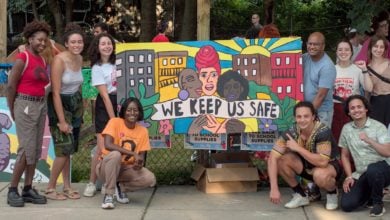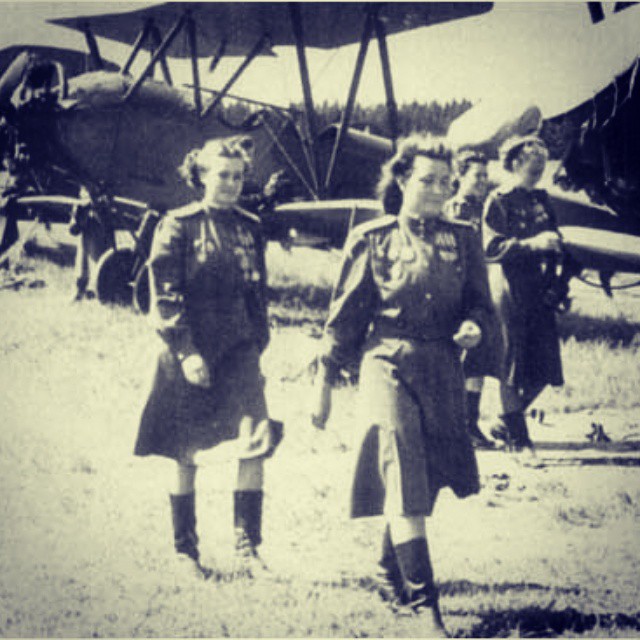The dramatic booing during Bernie Sanders’ speech from his core supporters — his own delegates at the Democratic National Convention — may well register historically as a turning point in the development of a new socialist movement in the United States.
As Sanders declared to them, “We must elect Hillary Clinton,” they erupted in anger and chanted back at him, “We want Bernie!” That apparent contradiction, of booing and cheering Sanders’ words in alternate breaths, is completely understandable.
The delegates were booing because Bernie the Individual appeared to be parting ways with Bernie the Movement. Both the Individual and the Movement have gone by the same name and have been conjoined for the last year, but they are two different political phenomena that are now decisively separated. The Bernie Sanders electoral campaign came to a crashing end — but the Bernie Sanders progressive movement, now in need of a new name and a new strategy, wants to keep fighting.
A few snapshots from the week in Philadelphia speak to this reality:
On Sunday, the day before the Convention began, thousands marched for clean energy — a dividing line between Sanders and Clinton, who supports fracking. We spoke with many Sanders supporters on the ground, and were surprised to find many even had an air of excitement and anticipation that Sanders had some trick up his sleeve and had formulated a secret plan with his delegates to win the nomination.
The DNC leaks, confirming what the Sanders campaign had been saying for a year, followed by the resignation of the hated DNC chair Debbie Wasserman Schultz and her immediate hiring by the Clinton campaign, charged up his base. Now that the whole world had material proof of the DNC conspiracy against Sanders on behalf of Clinton, some believed Sanders would withdraw his endorsement of her. This hope would be erased the next morning.
Already there were indicators that the delegates would not be tamed or directed by Sanders. Throughout the week, the mass media portrayed the unwavering activists of Sanders’ political revolution as petulant children. In truth they had come to Philadelphia to fight on behalf of the causes that had inspired them for the last year: against militarism and neoliberalism, for universal health care and higher education, to challenge the power of Wall Street and its trade deals, and to advance the living conditions of poor and working people. Compared to the generally well-heeled Clinton delegates, selected from the party officialdom, many Sanders delegates were from the grassroots, talented volunteers and working-class organizers. A large number of them had not been involved in politics at all this time last year. Forced by DNC regulations to stay in $400/night hotels, they had fundraised for weeks to get to Philadelphia, and weren’t inclined to let the moment pass.
Many delegates clearly understood that Sanders would not provide leadership to their struggle in this final Convention phase, and they were looking for new ideas and tactics. After the climate justice march, as our group headed towards a forum to demand freedom for U.S. political prisoners, a well-dressed young woman spotted our socialist t-shirts, introduced herself as a California delegate for Sanders, and asked us where the next action was. We asked her what the plan was for inside the Convention, and she replied, “Well what do you think I should do?” She gave us her cell phone number on the spot if we had any ideas.
On Monday, at a pre-planned 5-mile “March for Bernie” the most popular chant was “Hell No, DNC — We won’t vote for Hillary!” The chants celebrating Sanders — who that morning had heard boos from his own delegates — were sporadic and less widespread.
About half-way through the march Sanders’ activists volunteered their bullhorns to the well-organized socialist contingents in the crowd, including the PSL, who began chanting for immigrant rights, workers’ rights, women’s and LGBTQ rights, the defense of Muslim communities and Black Lives Matter. These chants were widely embraced and repeated at the same volume as the anti-Hillary ones. When socialist banners and red flags made their way to the front of the march, no one batted an eye. A PSL chant that on Sunday had only been picked up by parts of the crowd suddenly got a better reception: “Down, down with Trump and Clinton — Up, up with socialism!”
Signs of political radicalization were evident. At one point, when the front of the march temporarily stopped so that the back could catch up, an angry Bernie supporter stepped forward to challenge those of us with the bullhorns. She said, “We can’t wait until Thursday to say this [when Clinton was to become the official nominee] — we have to show them that we’re leaving the party now. We have to say: ‘DemExit Now! DemExit Now!’”
We followed her recommendation and within moments the entire march was repeating it. It was a powerful moment. For years socialists have essentially chanted to the people “Break with the Democrats” — with little to no effect. And now, after a year of campaigning inside the Democratic Party, outside a Democratic convention that they had come to influence, a mass of progressive people were chanting the same thing back to the socialists.
On Tuesday, the signs and enthusiasm for Green Party Presidential nominee Jill Stein became more prominent, and the two successive marches — “Black Resistance at the DNC” and “Shut Down the DNC” — both drew a few thousand people, with new militancy, that continued until late in the night. When Hillary Clinton’s name was officially nominated, by Sanders, a large group of delegates walked out in a secretly, pre-planned action. They marched from the convention center and met up with the other demonstrations.
By Wednesday, word began to circulate of the mistreatment of Sanders delegate inside the Convention hall, how their signs had been ripped from their hands, how their anti-war chants were drowned out with “U-S-A.” A number of delegates made their way directly to the Socialist Convergence, where Stein and other prominent intellectuals and activists spoke to a packed audience of 700 people. The convergence functioned as a sort of leftist counter-convention throughout the week. The raucous room debated how to characterize Sanders’ endorsement of Clinton — an outright betrayal or an understandable maneuver — and if Clinton indeed represented the “lesser evil.”
On the final day of the Convention, PSL Vice-Presidential candidate Eugene Puryear joined a “Which way forward for the political revolution” panel with Kshama Sawant of Socialist Alternative, Glen Ford of Black Agenda Report, Howie Hawkins of the New York Green Party, and Gayle McLaughlin, former Green Party mayor of Richmond, Calif. As a way forward, Sawant, Hawkins and McLaughlin each promoted the Stein campaign and local electoral contests in which progressives could run to win outside of the Democratic Party and achieve concrete gains for poor and working people. Glen Ford mainly offered a critique of the Sanders campaign and an analysis of the Democratic Party leadership as an equal threat to Trump, suggesting it represented “corporate fascism” in the United States and around the world.
Eugene Puryear of Party for Socialism and Liberation at What’s Next panel at #SocialistConvergence #DNCinPHL pic.twitter.com/yJNlbvtz4w
— PSL – Socialism (@pslweb) July 28, 2016
Puryear articulated a clear call to prepare for intense social struggle, for the forces of the “political revolution” to not overly focus on, and double down on, a rigged electoral process. Instead of the progressive “tearing ourselves apart” over who to cast a vote for in November, a better use of this movement’s energy would be to connect with those communities who have largely given up on change through elections, and to organize for massive street struggles under either Trump or Clinton.
Reviewing socialist tactics
For over a year, many socialists have only seen Bernie the Individual, the New Deal liberal who caucused with the Democratic Party in Congress for decades and pledged to redirect his campaign behind Clinton in the event of his loss. They treated the movement behind him as sheep who would follow him — a mass of people drawn to radical-sounding policies who would then be easily contained and redirected like the campaigns of Dennis Kucinich in the past.
It was a reasonable assumption from the standpoint of historical patterns and analysis, but incorrect as an organizing approach. It under-appreciated the depths of the anti-establishment feeling and failed to prepare for the looming contradiction between Bernie the Individual and the Bernie Movement. It impatiently demanded a radical break with the Democratic Party, forgetting the central organizing principle that people who want to make change often travel down the path of least resistance to begin, and that their political consciousness is radicalized through direct experience in the struggle. Saying “I told you so” now that Sanders has let down his base will result in little influence among the thousands and millions who poured their time, energy and hard-earned dollars into the campaign.
The only way to truly influence a movement of a great mass of people entering the world of struggle is to stand with them, to work alongside them, to help them navigate and understand the challenges they confront step-by-step in the process.
From the beginning, the Party for Socialism and Liberation, while running our own independent socialist campaign, has attempted to stand alongside the people drawn into Bernie Movement, and emphasized our basic solidarity with their fight against Wall Street and the Democratic Party machine. Above all, what we emphasized in conversations with Sanders supporters across the country was the necessity of building a strong and durable independent movement that could continue to fight and grow regardless of the Democratic nominating process.
We encouraged Sanders supporters to insist he prepare an independent candidacy in the event that Clinton stole the nomination. We called on registered Democrats in critical closed primary contests to vote Sanders and in New York helped mass distribute the “Battle of New York” newspaper featuring social movement voices in support of Sanders; this was a small effort, but it appeared to have an impact as the only part of Harlem that went for Sanders is located around our New York City office. As Sanders prepared to funnel his movement behind Clinton, lowering its aims to DNC platform reform, we argued such reforms would be empty and meaningless; the important thing was to keep the fight going in the streets and against the DNC.
For the PSL, this engagement with the Sanders Movement was not aimed at the election of Sanders. Our aims were to popularize socialist politics, to engage with Sanders activists and to grow the progressive insurgency leading into a highly unstable, contested DNC that could result in a considerable rupture within that ruling-class party. Given that oppressed communities and the organized working class remain basically captive constituencies of the Democratic Party, it is inconceivable that a mass radical political upsurge could take place in the United States without such an inner-party rupture.
For those of us on the ground in Philadelphia throughout the week, the events there confirmed this basic prognosis. The Sanders campaign indeed drew people into Democratic Party politics for a year, but it did so in the context of struggle with that party. It culminated not with their pacification, but with unadulterated anger at the Democratic Party, and a vast number of people seeking radical, left-wing alternatives to it.
Of course, this is not the case for everyone who voted Sanders — according to estimates from a few weeks ago, 28 percent of Sanders voters say they will not support Clinton under any circumstance, and that number is likely to shrink as the “lesser evil” pressure on them grows — but this was the general sentiment for the many thousands of Sanders supporters who came to the DNC as protesters or delegates.
There is no question that the months ahead will be tough for legions of progressive voters, who will be badgered, harassed, guilt-tripped and even privilege-baited into casting votes for Hillary Clinton — the very icon of the Wall Street-backed, pro-war political establishment. Many will bend to the unrelenting pressure so that they are not demonized for causing Trump’s election. Others are genuinely and understandably afraid of what a Trump presidency would mean.
The question of who to vote for in November, however, is a narrow question compared to the larger political process underway. The tens of millions of people who looked to the Sanders campaign to provide a progressive alternative to the ruling-class status quo are now being forced to choose between a right-wing Democratic Party and a far-right Republican Party. The next president will be highly unpopular from their first day in office.
The general population, especially young people, are considerably to the left of these ruling-class parties. A considerable segment of people feel entirely disenfranchised by the political process and have direct experience showing that the system is rotten to the core and rigged against them — a lesson that will not be soon forgotten.
No single movement or cause has yet emerged to replace the Sanders campaign and tap into that vast progressive energy and vision that it conjured, but this contradiction — between the neoliberal, reactionary government and the people — is sure to explode under the next president. The next explosion is unlikely to begin with revolutionary socialist politics, but it will start with a critical lesson: the Democratic Party is not the people’s party.






